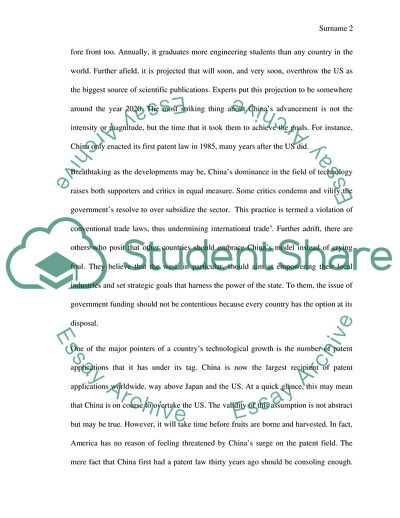Cite this document
(China and the Technological Challenge to the US Case Study Example | Topics and Well Written Essays - 1250 words, n.d.)
China and the Technological Challenge to the US Case Study Example | Topics and Well Written Essays - 1250 words. https://studentshare.org/technology/1870919-does-china-present-a-technological-challenge-to-the-us
China and the Technological Challenge to the US Case Study Example | Topics and Well Written Essays - 1250 words. https://studentshare.org/technology/1870919-does-china-present-a-technological-challenge-to-the-us
(China and the Technological Challenge to the US Case Study Example | Topics and Well Written Essays - 1250 Words)
China and the Technological Challenge to the US Case Study Example | Topics and Well Written Essays - 1250 Words. https://studentshare.org/technology/1870919-does-china-present-a-technological-challenge-to-the-us.
China and the Technological Challenge to the US Case Study Example | Topics and Well Written Essays - 1250 Words. https://studentshare.org/technology/1870919-does-china-present-a-technological-challenge-to-the-us.
“China and the Technological Challenge to the US Case Study Example | Topics and Well Written Essays - 1250 Words”. https://studentshare.org/technology/1870919-does-china-present-a-technological-challenge-to-the-us.


